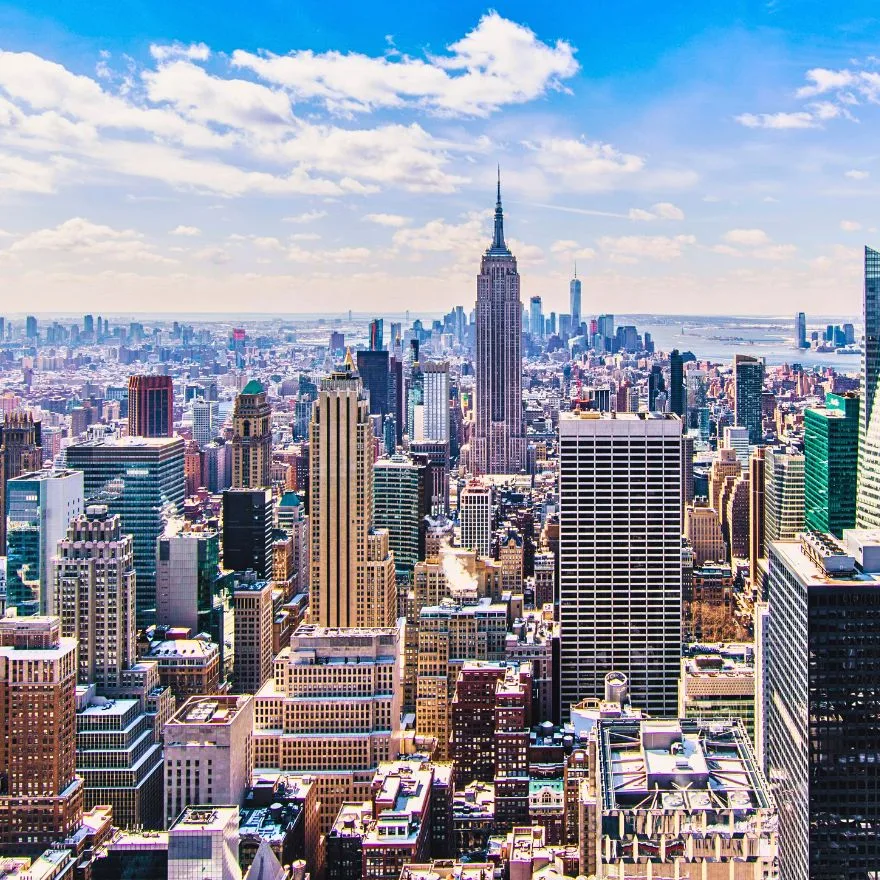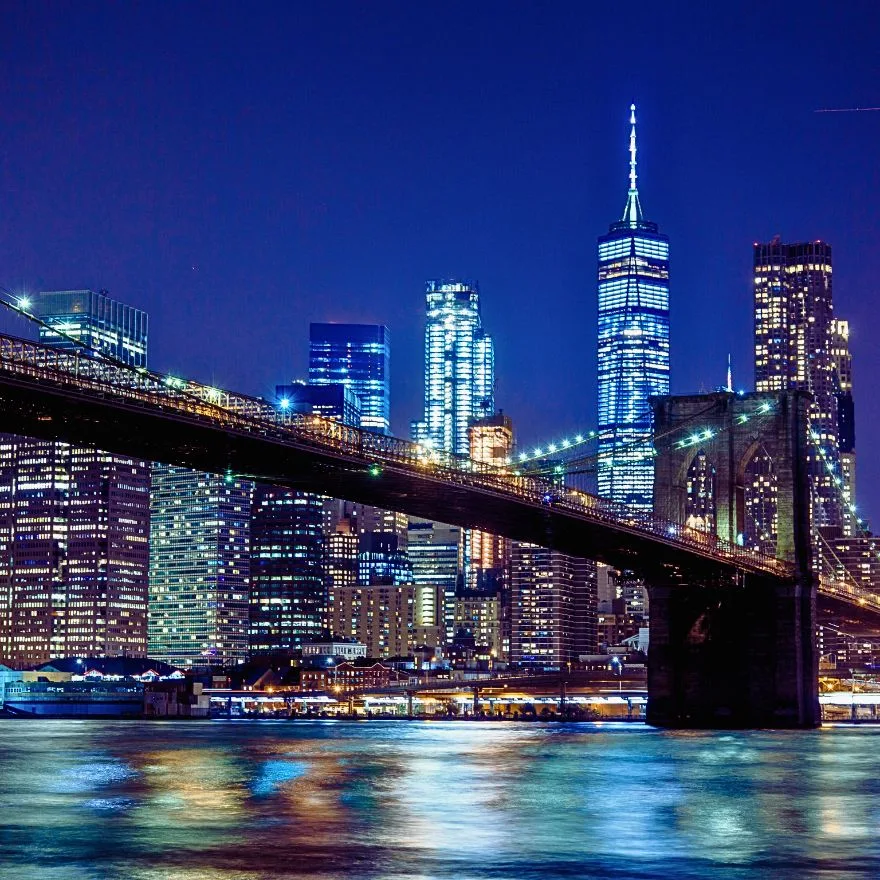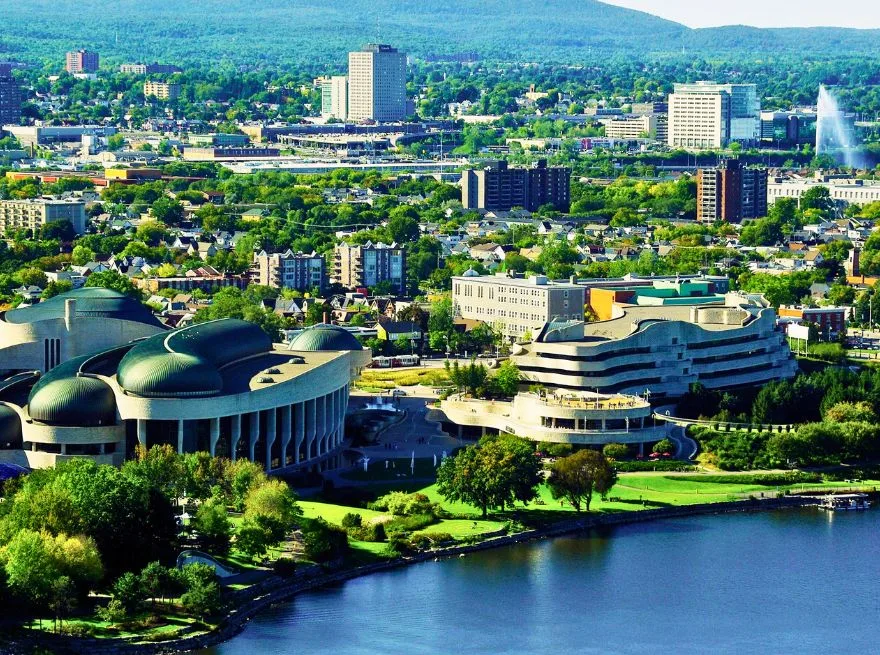
There’s something mystical about stepping off a plane into the crisp embrace of autumn air, especially when that air carries the electric pulse of New York City. As I descended into JFK Airport on that golden October morning, I could feel the city’s energy calling to my soul like a siren song. The leaves were just beginning their spectacular transformation, and I was about to embark on a seven-day journey that would forever change how I see both travel and myself.
Day One: Awakening to the Urban Symphony
Central Park – The Heart’s First Flutter
My first morning in the city began with a pilgrimage to Central Park, where autumn had painted the landscape in strokes of amber, crimson, and gold. Walking through the Sheep Meadow, I felt the crunch of fallen leaves beneath my feet – nature’s own percussion section accompanying the distant hum of traffic. The park, designed by Frederick Law Olmsted and Calvert Vaux in 1857, sprawls across 843 acres and serves as Manhattan’s green lung. As I wandered past the Bethesda Fountain, watching early morning joggers and dog walkers begin their daily rituals, I understood why this sanctuary has been the backdrop for countless love stories and life-changing moments.
The Metropolitan Museum of Art – A Cathedral of Human Expression
From the park’s natural beauty, I transitioned to the hallowed halls of the Metropolitan Museum of Art. Founded in 1870, this temple of culture houses over two million works spanning 5,000 years of human creativity. Standing before the Egyptian Temple of Dendur, transported stone by stone from the banks of the Nile, I felt the weight of centuries pressing against my consciousness. The autumn light filtering through the museum’s windows created an almost ethereal atmosphere, illuminating masterpieces that have witnessed the rise and fall of civilizations.
For lunch, I surrendered to the city’s culinary embrace at a small deli near the museum, savoring my first authentic New York bagel – everything seasoning scattered like confetti on perfectly chewy bread, topped with cream cheese and lox that tasted of ocean dreams.
Day Two: Brooklyn’s Soulful Embrace
Brooklyn Bridge – Walking on Dreams
Dawn found me on the Brooklyn Bridge, that marvel of 19th-century engineering completed in 1883. As I walked across its wooden planks, the city slowly awakening below, I felt like I was traversing a bridge between dreams and reality. The bridge, once the world’s longest suspension bridge, has witnessed the evolution of New York from a collection of separate boroughs into the unified metropolis we know today. The East River sparkled beneath me like scattered diamonds, and Manhattan’s skyline rose like a promise against the morning sky.
DUMBO – Where Industrial Meets Intimate
The Brooklyn neighborhood of DUMBO (Down Under the Manhattan Bridge Overpass) welcomed me with its cobblestone streets and converted warehouses that now house art galleries and boutique shops. The area’s transformation from industrial wasteland to hipster haven mirrors New York’s incredible ability to reinvent itself. Standing in Brooklyn Bridge Park, with the city’s silhouette reflected in the water, I tasted my first slice of Joe’s Pizza – a perfect triangle of heaven that dripped with the kind of grease that somehow makes everything taste better.
Williamsburg – The Pulse of Creative Energy
Williamsburg in autumn is a bohemian dream wrapped in flannel and vintage leather jackets. The neighborhood’s tree-lined streets were carpeted with fallen leaves, and every corner seemed to hide a new discovery. Once an industrial area populated primarily by Hasidic Jews and Italian-Americans, Williamsburg has evolved into Brooklyn’s creative epicenter. I spent hours browsing vintage shops and sipping locally roasted coffee that tasted like liquid inspiration.
Day Three: Midtown’s Vertical Dreams
Times Square – The Beating Heart
No trip to New York is complete without diving into the sensory overload that is Times Square. Named after The New York Times, which moved its headquarters there in 1904, this intersection of Broadway and Seventh Avenue pulses with an energy that’s both intoxicating and overwhelming. Despite the tourist crowds, standing beneath those towering digital billboards at sunset, I felt connected to every dreamer who has ever come to this city seeking something more.
Empire State Building – Touching the Sky
As evening painted the sky in shades of purple and gold, I ascended the Empire State Building. Completed in 1931 in just 410 days, this Art Deco masterpiece once stood as the tallest building in the world. From the 86th-floor observation deck, the city spread out below like a glittering circuit board, each light representing a life, a dream, a story in progress. The autumn air was sharp and clean at that height, and I felt suspended between earth and stars.
For dinner, I indulged in classic New York cheesecake at Junior’s – each creamy bite a symphony of vanilla and graham cracker that seemed to capture the city’s sweet soul.
Day Four: The Village’s Bohemian Whispers
Greenwich Village – Where Artists’ Souls Roam Free
Greenwich Village in autumn is poetry written in brownstone and cobblestone. The neighborhood’s winding streets, defying Manhattan’s typical grid system, seem designed for wandering and wondering. Once home to beats and bohemians, from Bob Dylan to Maya Angelou, the Village still thrums with creative energy. I spent the morning exploring Washington Square Park, where the arch stands as a smaller echo of Paris’s Arc de Triomphe, and street musicians provide a soundtrack to urban dreams.
SoHo – Cast Iron and Creativity
SoHo’s cast-iron architecture tells the story of New York’s industrial past transformed into artistic present. The neighborhood’s name comes from “South of Houston Street,” and its buildings, mostly constructed between 1850 and 1890, create one of the largest collections of cast-iron architecture in the world. Wandering through galleries and boutiques, I felt the weight of artistic history – this is where the contemporary art world was reborn in the 1960s and 70s.
Little Italy and Chinatown – A World Tour in Manhattan
The boundaries between Little Italy and Chinatown blur like watercolors in rain, creating one of the city’s most fascinating cultural intersections. I savored authentic dim sum followed by cannoli from Ferrara Bakery & Cafe, established in 1892. These neighborhoods represent the American Dream in its most tangible form – waves of immigrants who brought their cultures, traditions, and flavors to create something entirely new yet beautifully familiar.
Day Five: Culture and Heights
Museum of Modern Art (MoMA) – Where Innovation Lives
MoMA houses the world’s most influential collection of modern and contemporary art. Established in 1929, just days after the Wall Street Crash, the museum has been a beacon of cultural resilience. Standing before Van Gogh’s “Starry Night” and Picasso’s “Les Demoiselles d’Avignon,” I felt connected to the eternal human need to create, to express, to leave something beautiful behind.
Top of the Rock – A Different Perspective
While everyone climbs the Empire State Building, fewer discover the magic of the Top of the Rock. From Rockefeller Center’s observation deck, the Empire State Building becomes part of the view rather than the vantage point. Built during the Great Depression as part of John D. Rockefeller Jr.’s ambitious development project, Rockefeller Center represents American optimism carved in limestone and steel.
Broadway Show – The Theater District’s Magic
No visit to New York is complete without experiencing Broadway’s magic. The Theater District, concentrated around Times Square, has been the heart of American theater since the early 1900s. As the curtain rose and the orchestra swelled, I understood why they call it “The Great White Way” – the lights, the music, the collective gasp of an audience transported together into story, create a kind of secular church service where we worship at the altar of human imagination.
Day Six: Markets and Memories
High Line – Walking Above the World
The High Line represents New York’s genius for reinvention. This elevated park, built on a former freight rail line, transforms 1.45 miles of abandoned infrastructure into one of the city’s most beloved spaces. Walking 30 feet above the streets, surrounded by carefully curated plants and art installations, I felt like I was floating through the city’s dreams. The autumn light filtering through the urban canyon created an ever-changing gallery of shadows and reflections.
Chelsea Market – A Feast for All Senses
Housed in a former National Biscuit Company factory where the Oreo cookie was invented, Chelsea Market buzzes with the energy of dozens of food vendors and artisan shops. The market’s industrial architecture creates the perfect backdrop for culinary exploration. I sampled everything from lobster rolls to artisanal chocolates, each bite telling a story of immigrant traditions and American innovation.
The High Line – Sunset Meditation
Returning to the High Line as sunset painted the Hudson River gold, I found a bench near the 10th Avenue Square and watched the city transform from day to night. The autumn air carried hints of woodsmoke and possibility, and I realized that New York had worked its magic on me – I was already planning my return.
Day Seven: Farewell to the City That Never Sleeps
One World Observatory – Rising from Resilience
My final morning brought me to One World Observatory, atop the tallest building in the Western Hemisphere. Built on sacred ground where the Twin Towers once stood, One World Trade Center represents resilience, hope, and the indomitable spirit of New York. From 1,776 feet above the city (the height chosen deliberately to honor the year of American independence), I watched the morning sun illuminate a metropolis that has survived everything history could throw at it and emerged stronger.
9/11 Memorial – Remembering and Honoring
The 9/11 Memorial’s twin reflecting pools, set within the footprints of the original towers, create a space for contemplation and remembrance. The sound of water cascading into the voids drowns out the city’s noise, creating an island of peace in the urban storm. Bronze panels inscribed with names remind us that behind every tragedy are individual stories, individual losses, individual lives that mattered.
Staten Island Ferry – A Free Gift from the City
For my final New York experience, I boarded the Staten Island Ferry – a free 25-minute journey that offers some of the best views of the Statue of Liberty and Manhattan skyline. As the ferry pulled away from Whitehall Terminal, I watched the city recede but not disappear – it had already taken up permanent residence in my heart.
Navigating Your New York Adventure: Transportation Insights
During my week in the city, I discovered that having reliable transportation options can make or break your New York experience. While the subway system is extensive and efficient, there are times when having access to a rental car opens up possibilities for day trips to the Hudson Valley or Long Island’s wine country, especially during the spectacular fall foliage season. For travelers looking to explore beyond Manhattan’s borders, I highly recommend checking out DiscoverCars for competitive rental rates and a wide selection of vehicles. Their platform compares prices from major rental companies, ensuring you get the best deal while maintaining the flexibility to discover New York’s hidden gems at your own pace.
Staying Connected in the Digital Apple
In a city that never sleeps, staying connected is essential for navigating, sharing moments, and keeping in touch with loved ones back home. During my trip, I relied heavily on my phone for everything from subway maps to restaurant recommendations. International travelers especially need reliable data coverage without the shock of roaming charges. This is where DrimSim becomes invaluable – their international SIM cards and eSIM options provide seamless connectivity across the United States without the hefty fees traditional carriers charge. Whether you’re sharing that perfect sunset shot from the Brooklyn Bridge or navigating your way through the Village’s winding streets, having reliable, affordable data ensures you never miss a moment of your New York adventure.
The Golden Season: Why Fall is New York’s Crown Jewel
If you’re wondering when to visit New York City, let me paint you a picture of autumn magic. Fall, particularly October and early November, transforms the city into something ethereal. Central Park becomes a living impressionist painting, with trees displaying every shade of gold, amber, and crimson imaginable. The weather is crisp but comfortable – perfect for walking the city’s neighborhoods without the sweltering humidity of summer or the bone-chilling winds of winter.
Fall in New York means harvest festivals in Brooklyn’s Prospect Park, Halloween decorations adorning brownstone stoops, and the theatrical energy that comes with the start of Broadway’s new season. The city’s café culture truly shines during autumn – there’s nothing quite like cradling a warm cup of coffee while watching leaves dance down Fifth Avenue.
Historically, fall has been significant for New York. Many of the city’s most important institutions, from Columbia University to the New York Stock Exchange, begin their “new year” in September and October. The city’s energy feels renewed, purposeful, and infectiously optimistic.
Essential Travel Wisdom for Your New York Sojourn
Embrace the Walking Life New York is a walking city. Invest in comfortable shoes and prepare to discover the city one step at a time. The grid system makes navigation intuitive once you understand that avenues run north-south and streets run east-west.
Master the Subway Symphony The Metropolitan Transportation Authority (MTA) is your gateway to the city’s soul. Download apps like Citymapper or the official MYmta app. Always have your MetroCard or contactless payment ready, and remember – never block the doors.
Timing is Everything Avoid rush hours (7-9 AM and 5-7 PM) when possible. Museums are often less crowded on weekday mornings. Make dinner reservations well in advance, especially for popular restaurants.
Pack Light, Think Layers Fall weather in New York can be unpredictable. Mornings might be cool while afternoons warm up significantly. Layering allows you to adapt to the city’s moods.
Budget Wisely New York can be expensive, but it doesn’t have to break the bank. Many museums offer “pay-what-you-wish” hours, Central Park is free, and the city’s food trucks often serve meals that rival expensive restaurants at a fraction of the cost.
Stay Aware, Stay Safe New York is generally safe, but like any major city, it pays to stay alert. Keep valuables secure, be aware of your surroundings, and trust your instincts.
As my plane lifted off from JFK, carrying me away from the city that had captured my heart, I pressed my face to the window for one last glimpse of Manhattan’s glittering skyline. New York had given me more than sights and experiences – it had given me a renewed sense of possibility, a deeper appreciation for human creativity, and the understanding that sometimes the best journeys are the ones that change us from the inside out.
The city’s autumn magic had worked its spell on me completely. In seven days, New York had shown me its many faces – the grandiose and the intimate, the historical and the cutting-edge, the chaotic and the serene. Most importantly, it had reminded me that the world is full of wonders waiting to be discovered, and sometimes the greatest adventure is simply saying yes to the unknown.
Until we meet again, New York. Keep dreaming, keep creating, keep inspiring travelers like me to see the world – and themselves – with fresh eyes.
Frequently Asked Questions About New York City
Q: What is the best time of year to visit New York City? A: Fall (September-November) is considered the ideal time to visit NYC, offering comfortable temperatures, beautiful foliage, and fewer crowds than summer. Spring (April-June) is also excellent, while winter brings holiday magic but cold weather.
Q: How many days do you need to see New York City? A: A minimum of 4-5 days allows you to see major attractions, though 7-10 days provides a more comprehensive experience including neighborhoods like Brooklyn and Queens, plus time for shows and museums.
Q: Is New York City safe for tourists? A: Yes, NYC is generally very safe for tourists. Crime rates have decreased significantly over the past decades. Stay aware of your surroundings, especially in crowded areas, and use common urban safety practices.
Q: What are the must-see attractions in New York City? A: Essential NYC experiences include Central Park, Times Square, Brooklyn Bridge, Statue of Liberty, Empire State Building, 9/11 Memorial, High Line, and at least one Broadway show.
Q: How much should I budget for a week in New York City? A: Budget travelers can manage on $100-150/day, mid-range travelers should plan for $200-300/day, and luxury travelers often spend $400+/day. This includes accommodation, meals, attractions, and transportation.
Q: What food is New York City famous for? A: NYC is renowned for pizza, bagels, deli sandwiches, cheesecake, hot dogs, and diverse international cuisine. Don’t miss trying authentic New York-style pizza and a everything bagel with lox.
Q: How do I get around New York City? A: The subway system (MTA) is the most efficient and economical way to travel. Taxis, Uber/Lyft, walking, and Citi Bike are also popular options. Most attractions are accessible by subway.
Q: Do I need to tip in New York City? A: Yes, tipping is expected in NYC. Restaurant servers expect 18-20%, taxi drivers 15-20%, hotel staff $1-5 per service, and tour guides 10-15% of the tour cost.
Q: What neighborhoods should I explore in New York City? A: Beyond Manhattan, explore Brooklyn (Williamsburg, DUMBO), Greenwich Village, SoHo, Chelsea, Lower East Side, and Chinatown. Each offers unique character and attractions.
Q: Is it expensive to eat in New York City? A: NYC offers dining options for every budget. Street food and food trucks provide affordable meals ($5-15), while fine dining can cost $100+ per person. Many excellent mid-range options exist between $20-50 per meal.


